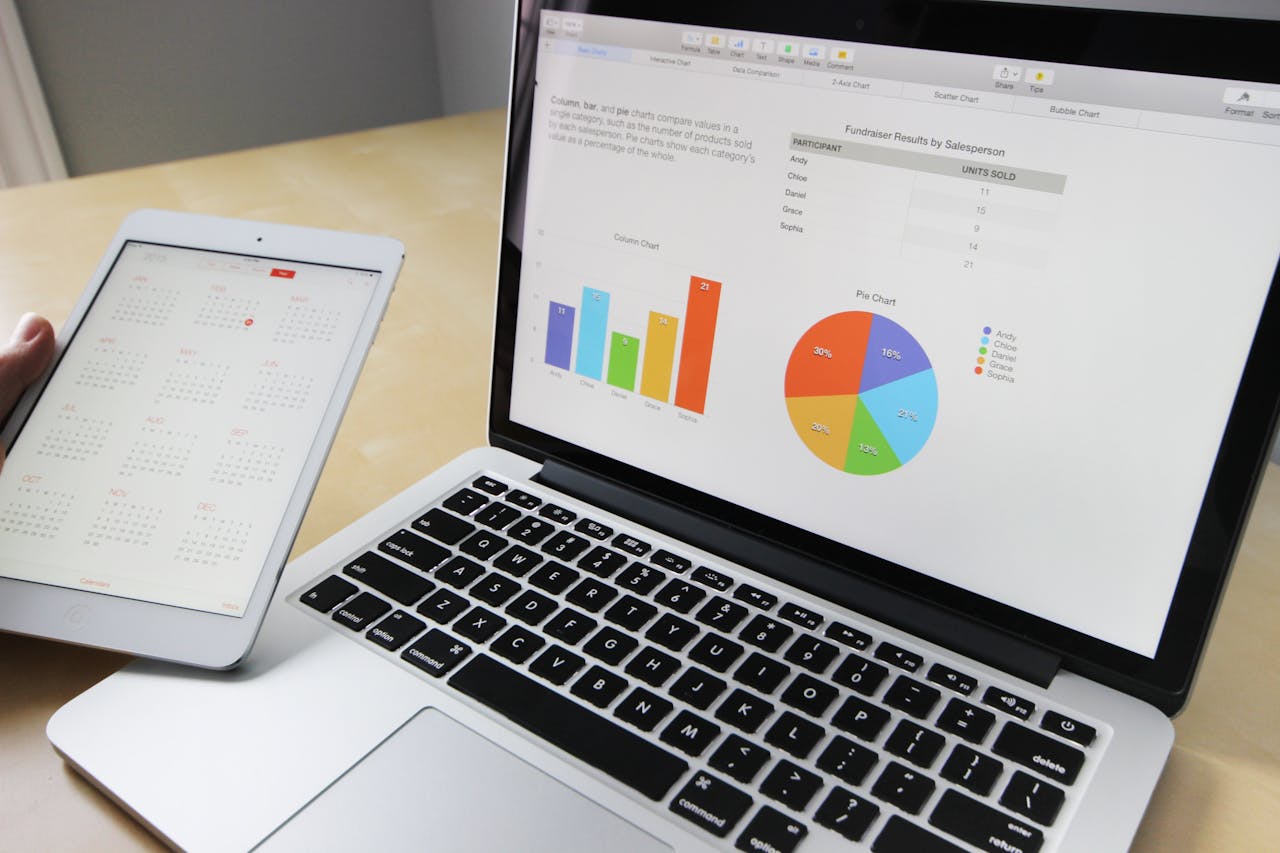The rapid advancement of Artificial Intelligence (AI) has revolutionized autonomous systems, but it has also raised concerns about the potential dangers associated with this transformative technology. Prominent figures like Geoffrey Hinton and Elon Musk have voiced their worries about AI surpassing human intelligence and the potential risks it poses for society.
Autonomous systems, powered by AI, have the ability to operate independently, making decisions and performing tasks without human intervention. While this promises efficiency and convenience, it also comes with inherent risks that need to be addressed.
Key Takeaways:
- AI in autonomous systems poses various risks and dangers that need to be acknowledged and addressed.
- Prominent figures, including Geoffrey Hinton and Elon Musk, have expressed concerns about the potential repercussions of AI surpassing human intelligence.
- The risks associated with AI in autonomous systems include job loss, privacy violations, algorithmic bias, socioeconomic inequality, market volatility, weapon automatization, and the development of uncontrollable self-aware AI.
- Transparent and explainable AI systems, diverse representation in AI development, ethical guidelines, global cooperation, and responsible governance are crucial for mitigating the risks and harnessing the benefits of AI.
- As AI technology continues to advance, it is essential to navigate the risks associated with its use in autonomous systems to ensure a safe and beneficial future.
Lack of Transparency and Explainability
One of the key concerns surrounding AI is the lack of transparency and explainability. AI systems, particularly deep learning models, can be complex and difficult to interpret, making it challenging to understand how they arrive at their decisions. This lack of transparency hinders the ability to explain biased or unsafe outcomes generated by AI algorithms.
The development of explainable AI is an ongoing effort to address this issue. Explainable AI aims to create AI models and algorithms that can provide clear and understandable explanations for their decisions. By making AI systems more transparent and interpretable, explainable AI can help build trust and accountability, allowing users to understand and validate the reasoning behind AI algorithmic decisions.
However, despite the importance of transparency and explainability, the adoption of explainable AI systems has been limited. Many AI models and algorithms in use today are still not designed to provide comprehensive explanations for their decisions. This lack of transparency poses risks in areas such as algorithmic bias, where biased decisions made by AI systems can go unnoticed and perpetuate inequalities.
Challenges in Achieving Transparency and Explainability
There are several challenges in achieving transparency and explainability in AI systems. Firstly, the complexity of deep learning models makes it difficult to trace the decision-making process and understand the underlying factors that contribute to the final outcome. Additionally, the lack of standardized techniques and guidelines for explainable AI makes it challenging for developers to implement transparent AI systems.
Another challenge lies in the trade-off between explainability and performance. More transparent AI models might sacrifice some degree of accuracy or efficiency, which can be a deterrent for their adoption. Striking the right balance between transparency and performance is crucial to ensure the widespread use of explainable AI.
Overall, addressing the lack of transparency and explainability in AI systems is essential to build trust, detect biases, and ensure the responsible deployment of AI technology.
Job Losses Due to AI Automation
AI-powered automation is a significant concern as it threatens job security in various industries. According to McKinsey, up to 30% of current job tasks in the US could be automated by 2030. This automation could lead to the loss of 300 million full-time jobs. Low-skilled and minority workers are particularly vulnerable to job displacement. The rise of AI also poses a threat to professions like law and accounting, which may see a significant impact on employment.
The impact of AI on employment is a topic of ongoing debate. While some argue that AI will create new job opportunities, others fear that the scale of job losses will outweigh the creation of new positions. The implementation of AI technology in industries such as manufacturing, transportation, and customer service has already led to job cuts in certain sectors.
“More and more tasks that require human intelligence are being automated, and this trend is likely to continue. The challenge lies in ensuring that we have systems in place to support workers who are at risk of losing their jobs due to AI automation. Reskilling programs and government intervention will be crucial to minimize the negative impact of AI on employment,”
| Industry | Estimated Percentage of Jobs at Risk of Automation |
|---|---|
| Manufacturing | 56% |
| Transportation and Warehousing | 48% |
| Retail Trade | 44% |
The table above illustrates the estimated percentage of jobs at risk of automation in different industries. It is clear that the potential impact of AI on employment is significant and should not be underestimated. While the future of work remains uncertain, proactive measures must be taken to ensure a smooth transition for workers affected by AI automation.
Preparing for the Future of Work
To prepare for the future of work in the age of AI, individuals and organizations must adapt and embrace new opportunities. Reskilling and upskilling programs can help workers gain the necessary skills to thrive in a digital economy. Governments and educational institutions play a crucial role in providing access to these training initiatives.
- Investing in STEM education to foster a skilled workforce capable of working alongside AI technology
- Encouraging continuous learning and professional development to stay relevant in a changing job market
- Creating supportive policies and safety nets to protect workers during the transition period
- Promoting entrepreneurship and innovation to foster job creation and economic growth
While job losses due to AI automation are a concern, it is important to recognize that AI technology also has the potential to enhance productivity, improve decision-making, and create new opportunities. By embracing the potential of AI while addressing the challenges, we can shape a future where humans and AI coexist harmoniously in the workforce.
Impact of AI Algorithms on Public Discourse and Political Influence
AI algorithms are increasingly being utilized to manipulate public opinion and exert influence on social media platforms. With the ability to target specific groups and promote certain viewpoints, these algorithms have the power to shape public discourse and sway political narratives. The ramifications of this AI-driven manipulation are significant and call for closer examination.
One area of concern is the filtering of content on platforms like TikTok. The use of AI algorithms to determine what users see and engage with raises questions about the potential for harmful and inaccurate information to be prioritized or suppressed. It also poses a challenge to the concept of a free and open digital space, where diverse perspectives are essential for a thriving public discourse.
“The emergence of AI-generated content, such as deepfakes, further exacerbates the challenge of discerning between real and fake information. This could erode trust in media and undermine the integrity of public discussions,” warns cybersecurity expert Dr. Jane Reynolds.
AI algorithms also play a significant role in political influence. By leveraging these algorithms, politicians and other actors can target specific demographics with tailored messaging, potentially reinforcing existing biases or swaying public opinion in their favor. This raises concerns about the democratic process and the fairness of elections.
| AI Algorithms and Social Manipulation | Impact on Public Discourse and Political Influence |
|---|---|
| Targeted messaging | Influences public opinion |
| Content filtering | Affects information access and diversity of viewpoints |
| Emergence of deepfakes | Undermines trust in media and public discussions |
| Political influence | Potential bias and manipulation of democratic processes |
Ensuring transparency and accountability in AI algorithms is crucial to mitigate the risks of social and political manipulation. Stricter regulations and guidelines may be necessary to prevent the misuse of these algorithms and protect the integrity of public discourse. Additionally, promoting media literacy and critical thinking skills can help individuals navigate the complex landscape of AI-driven content and make informed decisions.
The Role of Media Literacy
Media literacy plays a critical role in addressing the influence of AI algorithms on public discourse. By equipping individuals with the skills to critically evaluate information and identify potential biases, media literacy empowers citizens to make informed decisions. Governments, educational institutions, and media organizations should prioritize the promotion of media literacy as part of a comprehensive strategy to combat the negative effects of AI on public discourse.

Social Surveillance with AI Technology
The rapid advancement of AI technology has given rise to concerns about the increasing use of AI-driven surveillance systems and the implications they have on privacy and security. One notable example is the widespread deployment of facial recognition technology, which has sparked debates and controversies around the world. Facial recognition technology utilizes AI algorithms to analyze and identify individuals based on their unique facial features, raising concerns about the potential invasion of personal privacy.
AI surveillance technology, including facial recognition, has been employed in various contexts such as public spaces, airports, and even private establishments. While proponents argue that it can enhance security and assist in law enforcement efforts, critics argue that it poses significant risks to civil liberties and can be prone to abuse. The collection and storage of facial recognition data without proper consent or oversight can lead to mass surveillance and the potential for misuse.
AI surveillance technologies, such as facial recognition, raise privacy and security concerns. The use of facial recognition in countries like China for tracking individuals’ activities and political views poses a threat to personal privacy.
Furthermore, there are concerns that facial recognition technology can perpetuate biases and discrimination, particularly against certain demographics. Studies have shown that these systems often exhibit higher error rates for women and people of color, leading to potential misidentifications and wrongful accusations. This highlights the need to address algorithmic biases and ensure that AI technologies do not disproportionately harm marginalized communities.
Privacy Concerns with AI Surveillance
In recent years, several high-profile incidents have underscored the privacy risks associated with AI surveillance technology. For example, the misuse of facial recognition data by both private companies and government entities has raised alarm bells among privacy advocates. The lack of clear regulations and guidelines governing the use of AI surveillance systems further heightens concerns about the potential for abuse and unauthorized access to personal information.
- Uncontrolled collection and storage of facial recognition data
- Potential misuse and abuse of AI surveillance technology
- Algorithmic biases and discrimination
- Lack of regulations and guidelines
Addressing these privacy concerns requires robust legislation and oversight to ensure that AI surveillance technology is used responsibly and ethically. Striking a balance between security and privacy is crucial to safeguarding individual rights and maintaining public trust in AI technology.
AI Bias and Discrimination: Addressing the Challenges
AI systems are not immune to biases and discrimination. The training data used to develop these systems and the algorithmic design can perpetuate biases and inequalities in society. It is crucial to address these challenges to ensure fairness and prevent AI from reinforcing socio-cultural biases.
Algorithmic bias is a significant concern when it comes to AI. If the training data used to develop AI models is biased, the algorithms may make unfair or discriminatory decisions. For example, facial recognition systems have been found to have higher error rates when identifying individuals with darker skin tones, leading to racial biases.
Addressing AI bias requires unbiased algorithms and diverse training datasets. It is essential to ensure that the data used for training AI models is representative of the diverse populations it will interact with. Additionally, increasing diversity in the AI research community can help mitigate bias by bringing in different perspectives and lived experiences.
AI bias can have far-reaching consequences, perpetuating inequality and discrimination in various domains, including hiring, lending, and criminal justice. It is our responsibility to develop and deploy AI systems that are fair, transparent, and accountable.
By taking steps to address AI bias and discrimination, we can create a more equitable and inclusive society. Transparent and explainable AI systems can help uncover biases and facilitate accountability. Ongoing research and collaboration among academia, industry, and policymakers are essential to develop ethical guidelines and regulatory frameworks to govern AI technology.
| Domain | Biases and Discrimination |
|---|---|
| Recruitment | AI algorithms may favor certain demographics, leading to biased hiring decisions. |
| Criminal Justice | AI systems used for risk assessment may exhibit racial biases, leading to disproportionate sentencing. |
| Healthcare | AI algorithms may provide suboptimal care recommendations based on biased data, leading to disparities in treatment. |
Table: Examples of AI bias and discrimination in different domains.
AI and Socioeconomic Inequality: Impact on Economic Disparities and Job Displacement
Artificial Intelligence (AI) advancements have the potential to exacerbate socioeconomic inequality, contributing to economic disparities and job displacement. As AI-driven automation continues to expand, low-skilled workers are particularly vulnerable to wage declines and job loss. The increased efficiency and productivity provided by AI technologies often benefit wealthy individuals and corporations at the expense of those with less access to resources and opportunities.
The impact of AI on employment is significant, with McKinsey estimating that up to 30% of current job tasks in the US could be automated by 2030, potentially resulting in the loss of 300 million full-time jobs. While some new jobs may be created, the transition could lead to unemployment, especially for individuals in industries most susceptible to automation. This job displacement further widens the gap between high-income individuals and low-income workers.
Moreover, the concentration of AI development among a few large corporations and government entities limits diversity and opportunity. This centralization of power prevents smaller businesses and individuals from fully participating in and benefiting from the AI-driven economy. It is imperative to address the socioeconomic consequences of AI to ensure a fair and inclusive society.
The Impact of AI on Economic Disparities
A comprehensive understanding of the impact of AI on economic disparities requires a closer look at the specific factors contributing to inequality. While AI automation can enhance efficiency and economic growth, without proper measures in place, it can exacerbate existing inequalities. The displacement of low-skilled workers, who often have limited access to education and resources, can lead to an increase in income disparities.
Additionally, the potential for bias in AI algorithms can perpetuate socioeconomic inequalities. Biased training datasets and algorithmic design can result in discriminatory outcomes, affecting marginalized communities and reinforcing existing disparities based on race, ethnicity, gender, and other characteristics. Addressing these biases and ensuring fairness within AI systems are crucial for mitigating socioeconomic inequality.
| Impact of AI on Economic Disparities | Examples |
|---|---|
| Job Displacement | Automation of low-skilled positions leading to unemployment and wage declines. |
| Bias in AI Algorithms | Discriminatory outcomes perpetuating socioeconomic disparities based on race, ethnicity, and gender. |
| Concentration of AI Development | Limited diversity and opportunity as AI advancements are mostly driven by a few large corporations and governments. |
In conclusion, AI has the potential to amplify socioeconomic inequality, primarily through job displacement and biased algorithmic outcomes. To mitigate these risks, there is a need to prioritize inclusive AI development, reskilling programs, and social safety nets. By fostering diversity, transparency, and accountability in AI technologies, we can work towards a more equitable future.

Legal and Ethical Issues in AI
As AI technology continues to advance, it brings forth a range of legal and ethical challenges that must be addressed. The rapid development of AI systems has outpaced the establishment of robust legal frameworks and regulations, leaving a void in accountability and responsibility for AI decisions. Furthermore, the violation of international humanitarian law by AI systems poses significant ethical concerns. It is essential to develop clear guidelines to ensure that AI operates within ethical boundaries and respects human rights.
The lack of understanding of moral values by AI systems is another pressing issue. AI algorithms are designed to optimize specific objectives, often disregarding broader ethical considerations. Without a conscious effort to embed ethical principles into AI development, there is a risk of these systems perpetuating bias, discrimination, or harm to individuals and society as a whole. Ethical considerations must be an integral part of the AI development process, ensuring that these technologies align with human values and societal well-being.
“Technology is neither good nor bad; nor is it neutral.” – Melvin Kranzberg
Proper governance of AI technologies is crucial to navigate the legal and ethical challenges they present. Transparent and accountable AI systems are necessary to address concerns related to bias, discrimination, and privacy violations. Creating a framework for AI governance involves establishing regulations that protect individuals’ rights, ensuring fairness and transparency in algorithmic decision-making processes, and promoting responsible use of AI technologies.
| Legal Challenges of AI | Ethical Considerations in AI Development | AI Governance |
|---|---|---|
| Establishing legal frameworks and regulations for AI | Embedding ethical principles into AI development | Creating guidelines and regulations for responsible use of AI technologies |
| Defining accountability for AI decisions | Avoiding biases and discrimination in AI systems | Ensuring transparency and fairness in algorithmic decision-making |
| Addressing privacy concerns in AI | Respecting human rights and societal values | Promoting responsible AI use to prevent harm |
By addressing the legal and ethical issues surrounding AI, we can harness the full potential of these technologies while safeguarding against potential risks. It is crucial to foster collaboration among governments, organizations, and the AI community to establish comprehensive frameworks that promote the responsible and ethical development and use of AI. With proper governance, we can navigate the complexities of AI and shape a future where AI technologies benefit humanity as a whole.
Risks of AI Arms Race
The rapid development of artificial intelligence (AI) technology has sparked concerns about the potential risks associated with an AI arms race. Without proper regulation and global cooperation, the uncontrolled development of AI can have far-reaching consequences for society.
The Need for Global Cooperation
To effectively address the risks of an AI arms race, it is crucial for countries and international organizations to come together and establish guidelines for the responsible development and deployment of AI technologies. Collaborative efforts are needed to ensure transparency, accountability, and adherence to ethical principles in the use of AI.
Global cooperation can help prevent a competitive race to develop advanced AI systems without considering the broader implications. By fostering collaboration and information-sharing, countries can collectively work towards an AI landscape that prioritizes human well-being and societal benefit.
Uncontrolled Development of AI
The uncontrolled development of AI poses significant risks as it can lead to the emergence of technologies that are unregulated, biased, or unethical. Without proper oversight, AI systems can perpetuate discrimination, invade privacy, and potentially pose threats to security and stability.
It is essential to establish robust governance mechanisms and regulatory frameworks that address the challenges posed by AI. This includes ensuring transparency in AI algorithms, addressing biases in training data, and enforcing ethical guidelines for the development and use of AI technologies.
Summary
The risks of an AI arms race highlight the urgent need for global cooperation in the development and governance of AI technologies. By working together, countries can mitigate the potential dangers posed by uncontrolled AI development and ensure that AI systems are developed and used responsibly, ethically, and in a manner that benefits humanity.
| Key Risks | Potential Consequences |
|---|---|
| Unregulated AI development | Emergence of biased or unethical AI systems |
| Lack of transparency and accountability | Difficulty in identifying and addressing AI system errors or biases |
| Potential for AI-enabled weaponization | Threats to global security and stability |
| Increasing socioeconomic disparities | Exacerbation of inequality due to AI-driven job displacement |
Conclusion
The rapid advancement of AI technology has brought about a multitude of dangers that must be acknowledged and addressed. From job losses and privacy concerns to biases and socioeconomic inequality, the risks associated with AI are significant and require careful navigation.
To mitigate these risks, it is essential to develop transparent and explainable AI systems. By understanding how AI algorithms arrive at their decisions, we can address biased or unsafe outcomes. Additionally, diverse representation in AI development is crucial to avoid perpetuating algorithmic biases.
Ethical guidelines and responsible governance are vital in ensuring that AI technologies are developed and deployed in a manner that upholds accountability and respect for human values. Global cooperation is also necessary to prevent an AI arms race and to establish comprehensive frameworks and regulations.
While there are undoubtedly challenges associated with AI, it is important to recognize its potential benefits. By navigating the risks, we can harness the power of AI to drive innovation, improve efficiency, and enhance our lives. The future of AI technology lies in our ability to address its dangers while embracing its transformative potential.
FAQ
What are the dangers of AI in autonomous systems?
The dangers of AI in autonomous systems include the potential for AI to surpass human intelligence, job loss due to automation, deepfakes, privacy violations, algorithmic bias, socioeconomic inequality, market volatility, weapon automatization, and the development of uncontrollable self-aware AI.
Why is lack of transparency and explainability a concern in AI?
Lack of transparency and explainability in AI systems makes it challenging to understand how they arrive at their conclusions, hindering the ability to explain biased or unsafe decisions made by AI algorithms. The development of explainable AI is an ongoing effort to address this risk, but transparent AI systems are not yet widely adopted.
How does AI automation threaten job security?
AI automation threatens job security by potentially automating up to 30% of current job tasks in the US by 2030, leading to the loss of 300 million full-time jobs. Low-skilled and minority workers are particularly vulnerable to job displacement, and professions like law and accounting may also see significant employment impacts.
How can AI algorithms manipulate public opinion?
AI algorithms can be used to manipulate public opinion and influence social media platforms by promoting specific viewpoints and targeting specific groups. The use of AI algorithms on platforms like TikTok raises concerns about the filtering of harmful and inaccurate content, and the emergence of AI-generated content, such as deepfakes, further adds to the challenge of discerning real and fake information.
What are the privacy concerns with AI surveillance technology?
AI-driven surveillance technologies, such as facial recognition, raise privacy and security concerns. The use of facial recognition in countries like China for tracking individuals’ activities and political views poses a threat to personal privacy. Predictive policing algorithms used by US police departments can perpetuate biases and over-policing in certain communities.
How does AI perpetuate biases and discrimination?
AI systems can perpetuate biases and discrimination due to biased training data and algorithmic design. Unbiased algorithms and diverse training data sets are necessary to ensure fairness and mitigate discrimination. The limited diversity in the AI research community contributes to algorithmic bias, which can lead to socio-cultural inequalities affecting groups based on race, ethnicity, gender, and other characteristics.
How does AI exacerbate socioeconomic inequality?
AI technologies can exacerbate socioeconomic inequality by favoring wealthy individuals and corporations. Low-skilled workers may experience wage declines due to AI-driven automation, leading to economic disparities. The concentration of AI development among a few large corporations and governments also limits diversity and opportunity, further contributing to inequality.
What are the legal and ethical challenges of AI?
AI technologies raise legal and ethical challenges, including lack of accountability and responsibility for AI decisions, violation of international humanitarian law, and the lack of understanding of moral values by AI systems. Developing legal frameworks and regulations, fostering ethical AI development, and ensuring transparency and accountability are essential for proper governance of AI technologies.
Why is the AI arms race a concern?
The lack of a unified global effort to address the risks of AI has led to concerns about an AI arms race. The rapid development of AI technologies without proper regulation and cooperation can result in potentially harmful consequences. Multiple leaders and experts have called for a pause in advanced AI system development to allow for careful evaluation of the risks and encourage society to adapt to the changes brought by AI.
- Regulatory and Compliance: Pioneering the Future of Saudi Arabia’s Dedicated Cargo Airline - December 21, 2024
- Financial Strategies: Fueling the Growth of Saudi Arabia’s Dedicated Cargo Airline - December 20, 2024
- Operational Excellence: Ensuring Competitive Edge for Saudi Arabia’s Dedicated Cargo Airline - December 19, 2024






